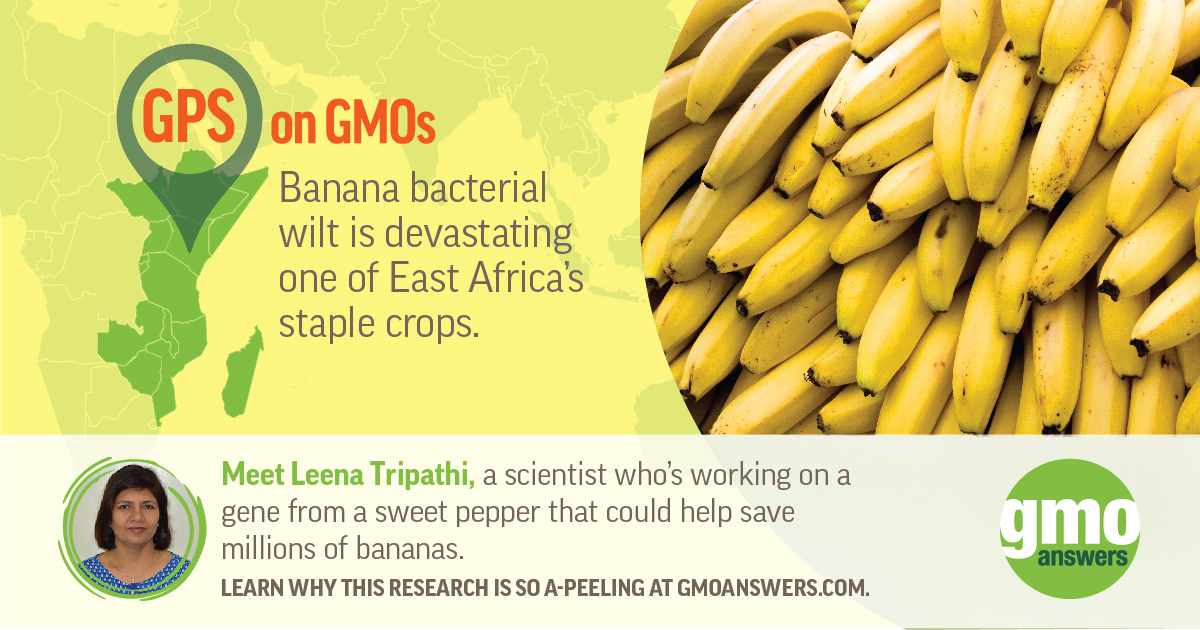This post was originally published on GMO Answers' Medium page.
Every day, farmers around the world use GMOs to help combat threats to food and the environment. Whether helping to protect crop yields against plant diseases, weeds, pests, or to reduce water use, GMOs are one of modern agriculture’s many innovations that allow farmers to grow more food with fewer resources.

The benefits of GMOs don’t stop at the farm. GMO crops can help to reduce food waste and combat under-nourishment around the world.
In particular, GMOs play an important role in addressing food security challenges in developing nations.
The banana is one of the most important staple food crops in East Africa. It feeds more than 100 million Africans and is mainly grown by smallholder subsistence farmers. But the banana is also vulnerable to pest infestation and various diseases, most notably the banana bacterial wilt disease, which ripens fruit prematurely – leading to the death of plants and rotting of fruits.
Scientists are working on a GMO banana that is resistant to bacterial wilt, using a gene from a sweet pepper.

Rice is an important staple food source for more than half of the world’s population and accounts for between 30-72% of the energy intake across Asia alone. GMO rice, or ‘Golden Rice,’ which gets its name from its yellow color, is more nutritious than rice that isn’t genetically modified since it’s packed with beta-carotene, a rich source of vitamin A. Vitamin A Deficiency is a known cause of death and blindness in the developing world – one which ‘Golden Rice’ can help address. Recently, the U.S. FDA approved Golden Rice – marking the third positive international assessment of this GMO crop and taking us one step closer to helping the people who need it most.
The GMO Hawaiian papaya has helped save an important industry for Hawaiians since it came to the U.S. market in 1998. For decades, the Hawaiian papaya had been devastated by the papaya ringspot virus, which greatly reduced crop yields and production. Once the GMO Hawaiian papaya was approved and planted, the production and viability of the fruit increased tremendously, restoring the lifeline industry for Hawaiians. By managing the spread of the ringspot virus, this innovation helps underscore the impact GMOs can have on revitalizing a community.

Feeding the world’s growing population through sustainable means is a big goal. But by using GMOs to help increase agricultural productivity and make farming more sustainable, it is a goal within reach.